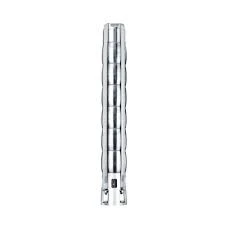ნოე . 19, 2024 01:37 Back to list
Replacing a Submersible Pump in Your Well System for Improved Performance and Efficiency
Replacing Submersible Well Pumps A Comprehensive Guide
Submersible well pumps are essential components in many residential and agricultural water systems, efficiently drawing water from deep underground sources to meet our daily needs. Over time, however, these pumps can wear out due to various factors such as age, poor maintenance, or water quality issues. Knowing when and how to replace a submersible well pump is crucial to maintaining a reliable water supply.
Signs It's Time to Replace Your Pump
Several indicators suggest that your submersible well pump may need replacement. First, consider the age of the pump. Most submersible pumps have a lifespan of 8 to 15 years, depending on usage and maintenance. If your pump is approaching or has exceeded this timeframe, it's a good idea to evaluate its performance.
Next, watch for irregular water flow. If you notice fluctuating water pressure, decreased water output, or sediment in your water supply, these may be signs of a failing pump. Strange noises, such as grinding or rattling, can also indicate mechanical failure. Additionally, if the pump frequently trips circuit breakers or runs continuously without producing water, these are strong signals that replacement may be necessary.
The Replacement Process
replacing submersible well pump

When replacing a submersible well pump, it’s vital to follow a systematic approach to ensure a successful installation. Begin by turning off the power to the pump and disconnecting it from the electrical supply. Next, remove the well cap and carefully extract the old pump from the well casing using a galvanized or PVC well pipe. This step may require specialized tools, such as a pump hoist, to safely handle the pump's weight.
Once the old pump is removed, inspect the well for any signs of damage or sediment buildup. Clean the well casing and check the wiring for any issues. When selecting a new submersible pump, ensure it matches the specifications of the old one, including horsepower, voltage, and flow rate.
Installation of the new pump involves lowering it back into the well, connecting the discharge pipe, and securing the electrical connections. After the installation, carefully test the pump to ensure it operates correctly and efficiently. Monitor the system for a few days to confirm that everything is functioning as it should.
Maintenance Tips for Longevity
To prolong the life of your new submersible well pump, regular maintenance is crucial. Periodically check the electrical connections and inspect the pump for signs of wear or corrosion. Additionally, consider scheduling routine pump tests and water quality analyses to address any potential issues before they escalate.
In conclusion, replacing a submersible well pump is a critical task that, when executed correctly, can provide years of reliable service. By being proactive and attentive to signs of malfunction, you can ensure that your water supply remains uninterrupted and clean. Proper installation and maintenance will not only extend the life of your pump but also enhance the overall efficiency of your water system.
-
Submersible Water Pump: The Efficient 'Power Pioneer' of the Underwater World
NewsJul.01,2025
-
Submersible Pond Pump: The Hidden Guardian of Water Landscape Ecology
NewsJul.01,2025
-
Stainless Well Pump: A Reliable and Durable Pumping Main Force
NewsJul.01,2025
-
Stainless Steel Submersible Pump: An Efficient and Versatile Tool for Underwater Operations
NewsJul.01,2025
-
Deep Well Submersible Pump: An Efficient 'Sucker' of Groundwater Sources
NewsJul.01,2025
-
Deep Water Well Pump: An Efficient 'Sucker' of Groundwater Sources
NewsJul.01,2025
-
 Submersible Water Pump: The Efficient 'Power Pioneer' of the Underwater WorldIn the field of hydraulic equipment, the Submersible Water Pump has become the core equipment for underwater operations and water resource transportation due to its unique design and excellent performance.Detail
Submersible Water Pump: The Efficient 'Power Pioneer' of the Underwater WorldIn the field of hydraulic equipment, the Submersible Water Pump has become the core equipment for underwater operations and water resource transportation due to its unique design and excellent performance.Detail -
 Submersible Pond Pump: The Hidden Guardian of Water Landscape EcologyIn courtyard landscapes, ecological ponds, and even small-scale water conservancy projects, there is a silent yet indispensable equipment - the Submersible Pond Pump.Detail
Submersible Pond Pump: The Hidden Guardian of Water Landscape EcologyIn courtyard landscapes, ecological ponds, and even small-scale water conservancy projects, there is a silent yet indispensable equipment - the Submersible Pond Pump.Detail -
 Stainless Well Pump: A Reliable and Durable Pumping Main ForceIn the field of water resource transportation, Stainless Well Pump has become the core equipment for various pumping scenarios with its excellent performance and reliable quality.Detail
Stainless Well Pump: A Reliable and Durable Pumping Main ForceIn the field of water resource transportation, Stainless Well Pump has become the core equipment for various pumping scenarios with its excellent performance and reliable quality.Detail
